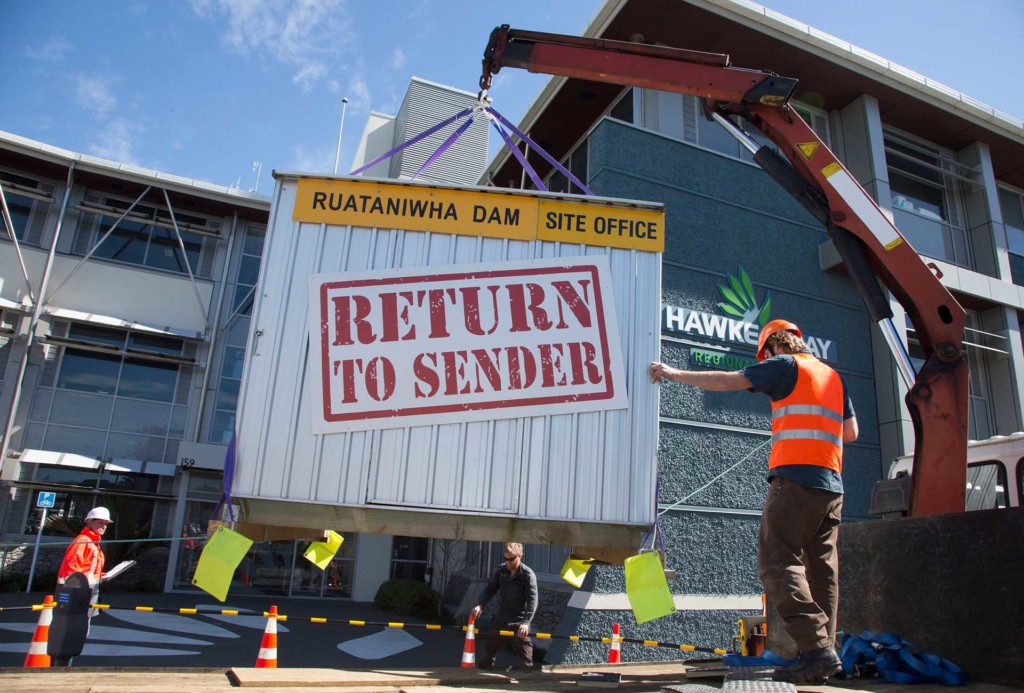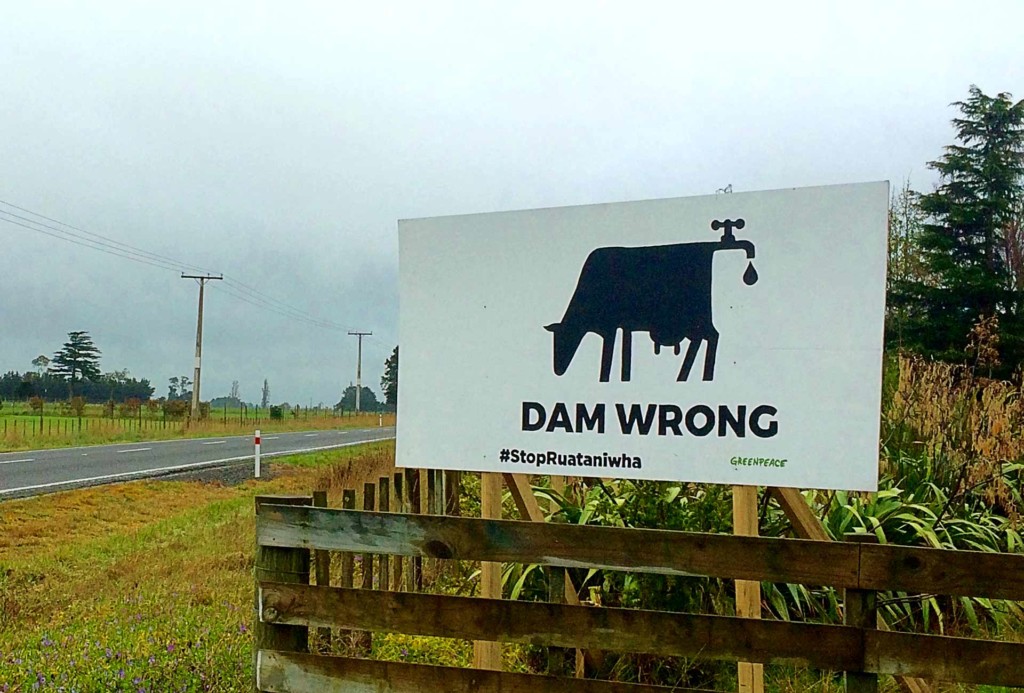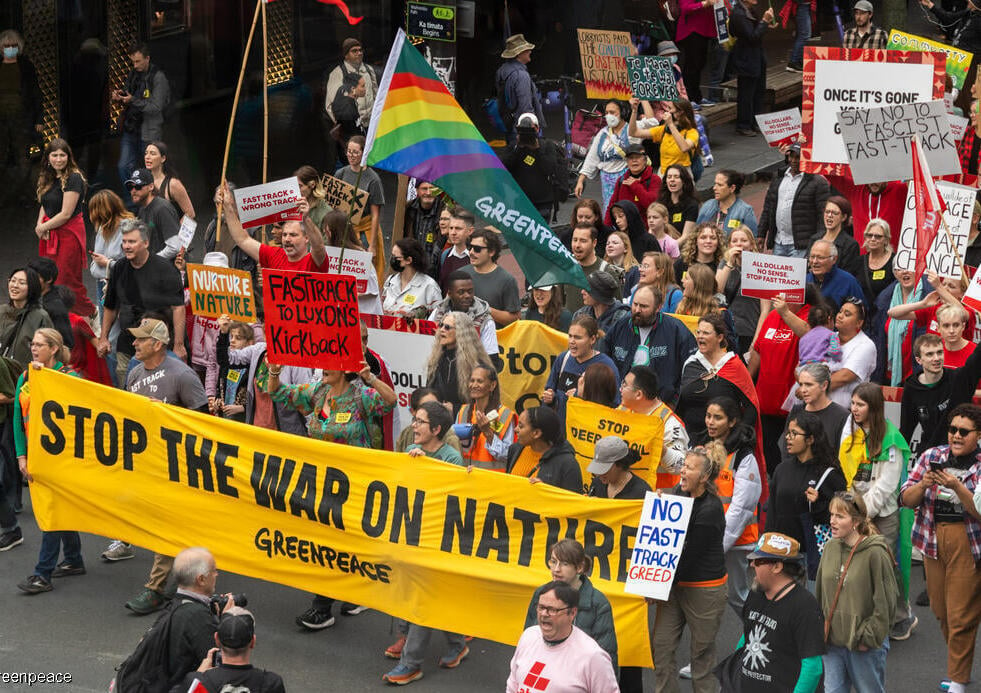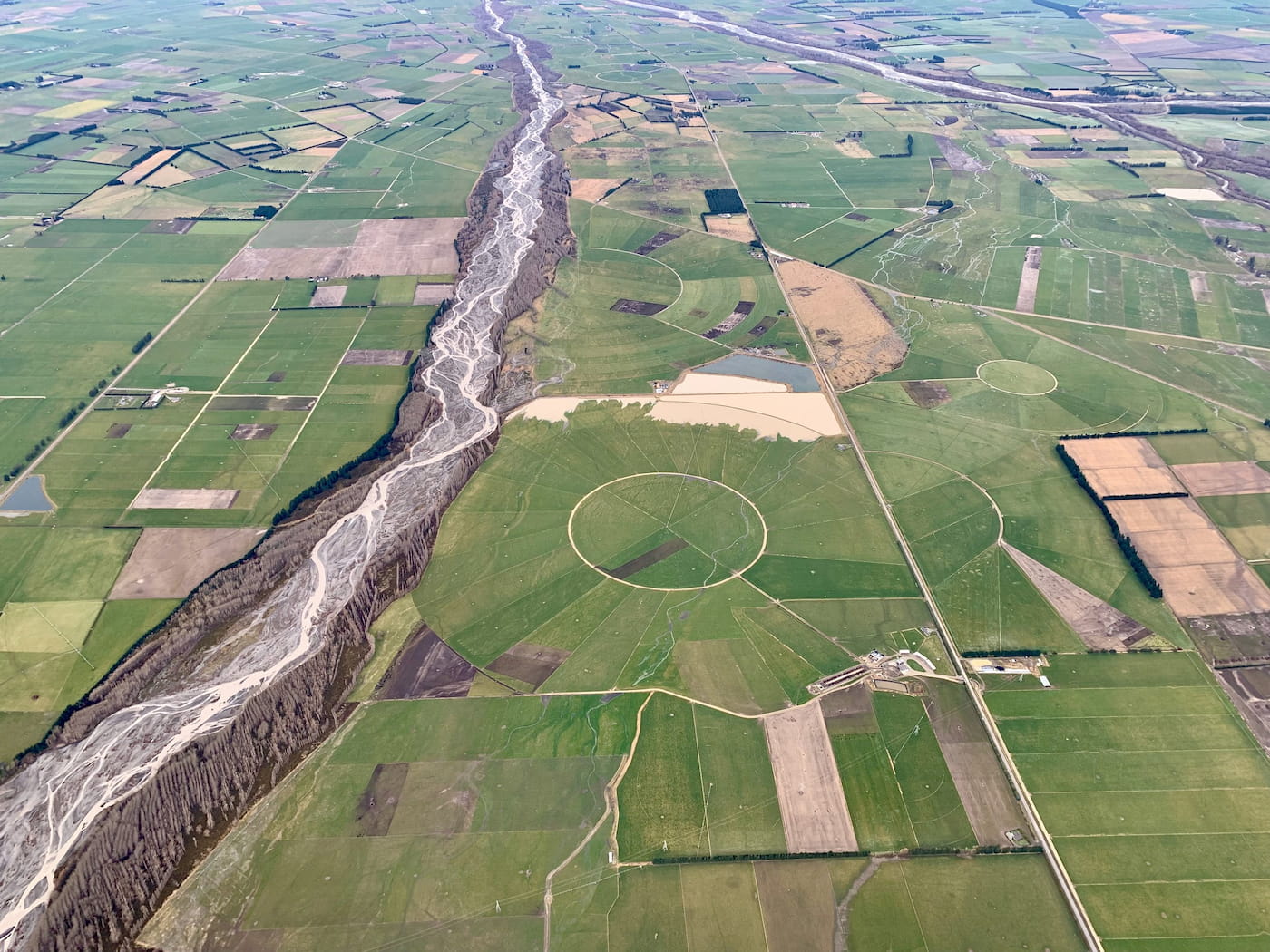Recently, Aotearoa took a frightening glimpse of one of its first-ever zombies. Lurking in the Ruahine Ranges in Hawkes Bay, the Ruataniwha Dam, once dead in the water, looks set to rise from the grave.
But what is the Ruataniwha Dam, and why is it so significant?
The Ruataniwha Dam is a key piece of infrastructure in a proposed intensive irrigation scheme which would dam the clear waters of the Makororo River and flood 22 hectares of unique conservation land. Here’s a video we made about it in 2017.
The water from this dammed river would be used for irrigation, which would drive the large-scale conversion of farmland into dairying. Hawkes Bay, a region that experienced the country’s worst-ever waterborne gastro outbreak, which made an estimated 5,500 sick and killed four people, would become home to thousands more dairy cows and their effluent.

Greenpeace campaigned to stop the Ruataniwha Dam for many years, alongside local allies and environmental organisations – and we won.

We won that fight for good reason. The Ruataniwha Dam would put the Hawke’s Bay region into significant debt, flood precious conservation land, and dam a wild river, harming aquatic life and reducing the amount of water flowing on to the Waipawa and Tukituki rivers.
But now, the Ruataniwha Dam is back – under the fast-track bill
The Ruataniwha Dam was deemed illegal, and so since 2017, the consents to proceed with building this dam have been useless – but under a Luxon Government, euphemistically named ‘water storage schemes’ are back.
Dams have always been highly unpopular and prone to being successfully stopped by local communities. So, Bishop and Luxon are trying to give dams a makeover. But make no mistake, a “water storage scheme“ is just a dam dressed up in more benign-sounding words.
Luxon and Bishop are using the corrupt, anti-democracy fast-track legislation to push the Ruataniwha Dam project through without having to worry about the illegality of setting the dam up in the first place. The Ruataniwha Dam is a private development and it’s already consented, but the developers need the Fast Track to give them access to the Department of Conservation land that the court ruled against last time.
But to get around the public opposition to the ‘Ruataniwha Dam’, the developers have renamed the project to the ‘Tukituki Water Storage Scheme’.
What’s the difference between the Tukituki Water Storage Scheme and the Ruataniwha Dam?
In short: nothing changes. The local council claims that the Tukituki Water Storage Scheme is investigating ways to improve water security, but their own documents make it clear that they’ve already made up their mind and plan to proceed with the dam.
So, what’s the big deal with dams like the Ruataniwha, anyway?
Large-scale dams are a horror story no matter which way you look at them. They are high-cost, high-risk white elephants that fail both the economic and environmental test. They lock farmers into expensive dependence, driving unsustainable intensification that ultimately makes them less resilient.

When freshwater is dammed or diverted away from fragile river ecosystems into irrigation schemes, the water is not used for drought resilience. Instead, the water is used to convert new land into water-hungry intensive dairy or to intensify existing land-use, in arid regions, leading to less drought resilience, not more.
That’s because one of the only ways farmers can afford to buy into these expensive schemes is to convert the farm to intensive dairying. Dams are big, ugly, hulking pieces of infrastructure that cause major ecological disturbance to the river in which they are built. But they also have serious downstream consequences for the rest of the waterways in the catchment.
Irrigation and dairy pollution harm people as well as the rivers.
New Zealand already has too many cows causing havoc to the health of freshwater and rural people. Nearly half of the country’s rivers are too dirty to swim in. A mere two in every hundred lakes are considered in good health. More than two-thirds of native freshwater fish are on the verge of extinction. Drinking water in some rural communities is becoming increasingly contaminated with nitrate, and in many cases, is already above the limit officially considered safe for drinking.
Industrial dairying and big irrigation is trashing New Zealand’s waterways. And the very worst thing we could do now is build more giant irrigation schemes that will compound the problem.
If the Ruataniwha dam goes ahead, it will have ramifications for the future security of clean water right across New Zealand. Several think-big irrigation schemes designed to expand industrial dairying are planned throughout the country and their promoters are hoping Ruataniwha sets a precedent and gets the green light.
Why is the Ruataniwha important right now?
In late 2024, the Central Hawkes Bay District Council transferred the resource consents to build the Ruataniwha Dam – or, as it’s been rebranded to, the Tukituki Water Storage Scheme- to a newly-established community trust.
The transfer of these consents to a charitable trust is a desperate attempt to resurrect the Ruataniwha Dam. That’s because the Council and developers are greenwashing the vehicle as a “community trust”. There is no evidence for the Council’s claims that the community will benefit from the revenue gained by licensing the consents to a commercial third party. Not only that, there is a real risk that the community will pay the price in the event of environmental disaster.
Additionally, the community trust is exempt from responsibilities under the Local Government Official Information and Meetings Act 1987. We can’t request information, meeting minutes or agendas by right, like we can for Council meetings, and we don’t know what decisions are being made behind closed doors. This lack of transparency is beneficial for corporations because it means that they don’t have to worry about public blowback for pushing ahead with decisions that the public opposes.
The local community is opposed to the Ruataniwha Dam.
Local opposition is already present, and growing. On the platform set up by the local council to seek community input, there was a massive outpouring of opposition to the Trust and the dam.
We will continue to fight to stop the Ruataniwha Dam, just as we have for the last decade. And we’ll do that alongside our allies in the Hawkes Bay community. People across Aotearoa are opposed to big irrigation dams destroying the rivers, lakes, and forests that they hold dear – and we will make our voices heard.
If the Ruataniwha Dam proceeds under the fast-track bill, we’re willing to stand against this destructive development. We’re calling on everyone to join us – will you add your name to our open letter to companies who plan to use the fast-track to bypass democracy?

Sign on to this open letter to industry now to help push more of them to opt out of the Fast Track.
Add my name


